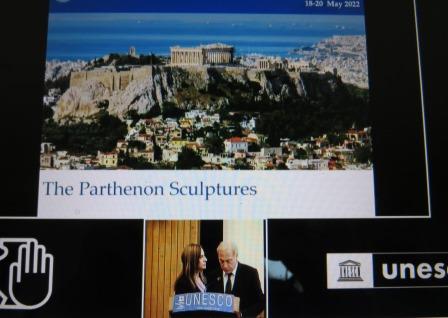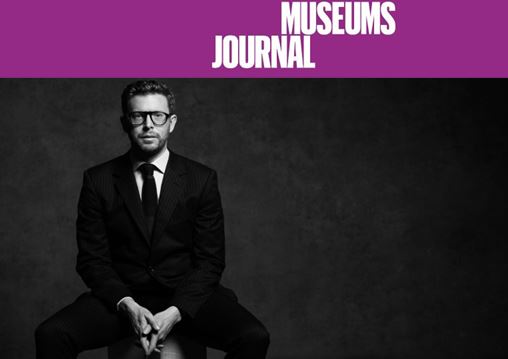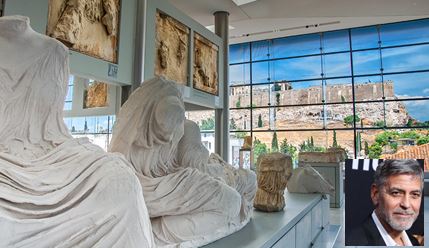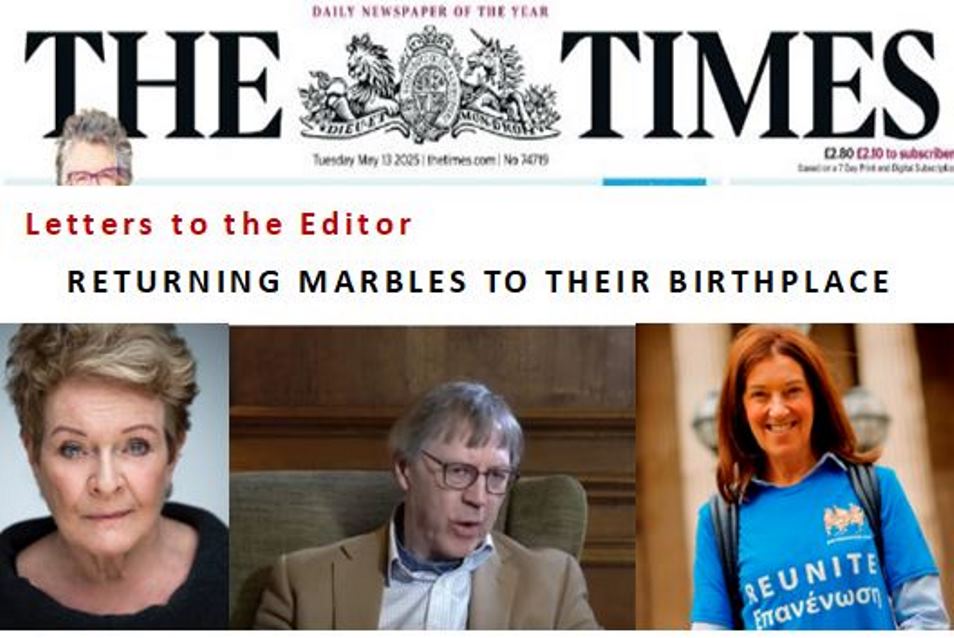Paris Wednesday 18 May 2022, International Museum Day and the 23rd session of UNESCO's ICPRCP.
Two presentations: Greece and United Kingdom, and Northern Ireland on the reunification of the Parthenon Marbles. Watch the presentation with this link: 23rd session of the ICPRCP - YouTube, at 3:20:02.
Artemis Papathanassiou, Senior Legal Advisor at the Greek Ministry of Foreign Affairs and Professor Stampolidis, the Director General of the Acropolis Museum provided a factual and well thought out presentation.
The UK's presentation was a tale of two halves. Helen Whitehouse from the DCMS outlined the strong ties between Greece and the UK but was concerned that the recommendation and decision made at the previous session of UNESCO's ICPRCP in September 2021, had 'abused the process and that the inaccuracies reported in the media needed to be addressed'. Jonathan Williams of the British Museum, certainly added to the worry that more excuses can still be added as to why the Parthenon Marbles may never be reunited. Jonathan explained that most of what is displayed in Room 18 was not forcibly removed from the Parthenon but taken from the rubble. The saddest part of his enthusiastic speech, was when he exclaimed that 'there can never be a magic moment for the reunification of the sculptures' simply because half have been lost in the history of the Parthenon, spanning over a period of more than 2,500. He didgraciously, praised Greece on the restoration of the Parthenon.
With so many countries representated, and supporting Greece, the UK looked out of step with the pressing request for dialogueon on this matter. And many countries remarked, that over the 40 years that this issue has been discussed at UNESCO, they hoped that the UK would find a way to discuss this with Greece, in such a way as to find a way forward.

Professor Anthony Snodgrass, Hon President of this committee listened to Jonathan Williams' presentation today and added: "the generalisation, about what proportion of the sculptures was already 'on the ground', is impossible to quantify or even substantiate, as there was little in the way of documentary record from the time. The major exception is that of the metopes removed from the South side of the Parthenon (Lusieri's first target), where we do have the horrified accounts of Dodwell, Clarke and other visitors on the irreparable damage to the building from which they were in the process of being violently detached.
The frieze is a different matter, because the best evidence is what we can still see today, in the shape of the sawn-off blocks in the British Museum. To reduce the weight for transport, Lusieri had the back of most blocks sawn across and discarded, so as keep intact just the sculpted face. Professor Pandermalis was able to recover, from the Acropolis stone collection, one of these rejected half-thickness backings, which many will have seen in the Acropolis Museum. In itself, this does not mean that every block had first to be lowered from its place on the upper part of the building; but the state of preservation of the vast majority of the British Museum slabs is enough to show that they had not fallen from 40 feet above, but had been carefully detached and lowered, to be sawn on the ground. The shortage of contemporary documentation of the frieze explains why William St.Clair's treatment of it is so brief. But look at Christopher Hitchens's 2008 edition, page 26 and bottom of page 33, for the ironical fact that we depend on a former Keeper of Greek and Roman at the British Museum (A.H.Smith) for the fullest account of the whole process.
The pediment figures are a different story again, as several of them, being free-standing statues, had indeed fallen to the ground, in or after the 1687 explosion; but the British Museum has the lion's share of what survives (Christopher Hitchens pp.124-5). So, all in all, it's not correct to say that much of what Elgin took was already on the ground.
Yannis Andritsopoulos, UK correspondent wrote his article in today's Ta Nea outlining yesterday's session at the ICPRCP. Below the statement from the DCMS published in that article:
“The UK has a longstanding position on this issue that has not changed - the Parthenon Sculptures were acquired legally in accordance with the law at the time. The British Museum operates independently of the government and free from political interference. All decisions relating to collections are taken by the Museum's trustees.”
"There has been no change to the UK's position on the Parthenon Sculptures and no change to the nature of our formal engagement with Greece on the issue."
And below, a statement sent today by the British Museum to Yannis, for Ta Nea:
The British Museum can confirm that no new talks with the Greek government have taken place or are planned regarding the repatriation of the Parthenon Sculptures.
We have always enjoyed a positive and collaborative relationship with UNESCO and with colleagues from institutions all around the world – including the Acropolis Museum in Athens. The Museum is always willing to consider requests to borrow any objects from the collection, we lend between 4000 – 5000 objects every year. For instance, 170 ancient Hellenic objects are touring Australia and New Zealand where they will reach and inspire new audiences before returning to the Museum.
These beautiful works of art are loved by a world-wide community and we believe that public access should lie at the heart of these conversations, too often discussions are limited to legalistic and adversarial context instead of focusing on how to share the sculptures with a wider world.
The role of a modern museum is to provide a place where these objects spark creativity and help people understand the past, shape the present and prepare for the future. We have always believed that these works help visitors embrace that vision.
The ancient city-state of Athens was one of the Eastern Mediterranean's leading nations, a cultural and military powerhouse that rivalled mighty Persia. Millions of visitors to the British Museum benefit from a permanent collection that captures this vast arc of history that has had a lasting impact on the emergence of the modern world.
Deepening public access, creating new ways and opportunities for collections to be shared and understood right across the world, remains at the core of what the British Museum seeks to achieve.







Comments powered by CComment